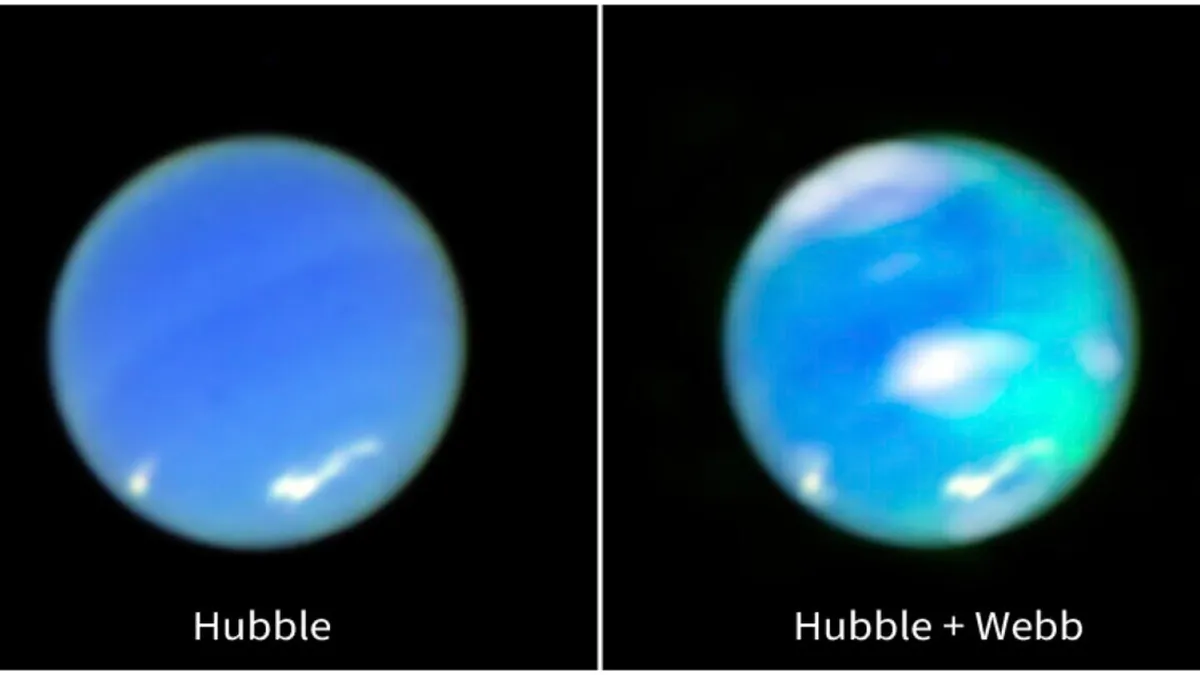
Neptune’s auroras have been vividly captured in unprecedented detail by NASA’s James Webb Space Telescope. This groundbreaking achievement offers scientists a clearer understanding of the planet's atmospheric phenomena. While auroras on Neptune were first hinted at during a flyby by the Voyager 2 spacecraft in 1989, the Webb telescope’s latest images provide definitive proof of their existence, showcasing these luminous displays in infrared light.
The awe-inspiring images were released by NASA on Wednesday, and the findings are documented in the prestigious journal Nature Astronomy. Auroras occur when electrically charged particles from space collide with atmospheric molecules, leading to a series of reactions that emit light. On Earth, these spectacular displays, known as the northern and southern lights, are predominantly visible near the polar regions.
Scientists have long been fascinated by auroras on other planets, studying them extensively on Saturn and Jupiter. However, observing Neptune, the farthest planet from the sun, has posed significant challenges. “Neptune has always been elusive,” stated James O’Donoghue, a planetary scientist from the University of Reading and co-author of the new study. He emphasized that Neptune's auroras had only been glimpsed once before by the Voyager mission, leaving researchers eager for a second look.
What makes Neptune’s auroras unique is their location. Unlike Earth, where auroras are primarily found near the poles, Neptune's auroras are situated near the planet's mid-latitudes. This phenomenon is attributed to the distinct characteristics of Neptune's magnetic field, which influences the distribution of auroras across its surface.
In addition to capturing stunning images of the auroras, researchers made another intriguing discovery: Neptune’s atmosphere has significantly cooled since the 1980s. This cooling may have resulted in a dimming of the auroras' brightness, affecting their visibility. Co-author Heidi Hammel of the Association of Universities for Research in Astronomy commented via email that the Webb telescope's observations represent “the first robust detection” of these mysterious light displays.
With the powerful capabilities of the James Webb Space Telescope, scientists are now equipped with advanced tools to explore the outer planets of our solar system. This breakthrough not only enhances our understanding of Neptune's auroras but also opens new avenues for research into the atmospheric dynamics of distant celestial bodies.
The Associated Press Health and Science Department benefits from the support of the Howard Hughes Medical Institute’s Science and Educational Media Group, along with the Robert Wood Johnson Foundation. The AP remains solely responsible for all content produced.